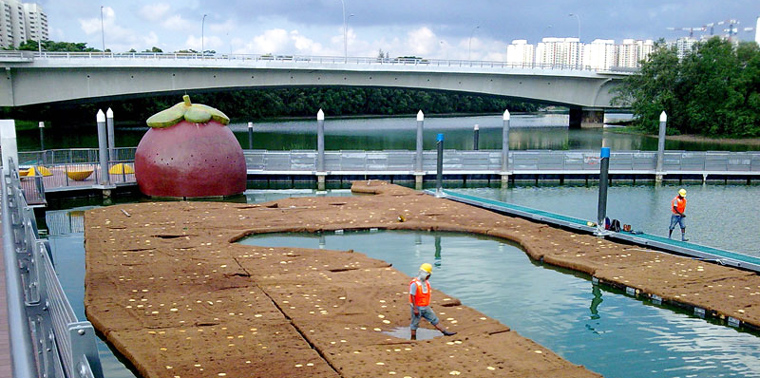January 27, 2013 — Keeping lakes and rivers healthy is a challenge for cities around the world as runoff adds nutrients, development eats up habitat, landfills pollute and wastewater stagnates. Wetlands and marshlands along waterways cleanse water, protect biodiversity and reduce erosion. But wetlands and marshes take a long time to develop naturally. So, how can humans help? Inventors are finding solutions by looking to the natural world.
Anne and Bruce Kania of Montana-based Floating Island International are working to bring a concentrated wetland effect to any body of water through biomimicry. Their water management work is inspired by the kind of floating peat bogs found in waters across northern latitudes.
Municipalities, the U.S. Army Corps of Engineers, private organizations and many others from California to New Zealand have commissioned the floating islands for lakes and waterways because the islands clean polluted water, provide nutrients for fish, contribute to species habitat and sequester carbon. More than 5,000 islands have been built from a nonwoven matt of filter material made of recycled plastic (think loofah sponge made from recycled soda bottles) that is seeded with native plants. In the company’s early days, it created mostly small, backyard-pond-sized swaths. More recently, though, FII has focused on larger islands, like the one in Lake Rotorua, New Zealand, which spans roughly 55,000 square feet.
Ensia shares solutions-focused stories free of charge through our online magazine and partner media. That means audiences around the world have ready access to stories that can — and do — help them shape a better future. If you value our work, please show your support today.
Yes, I'll support Ensia!
